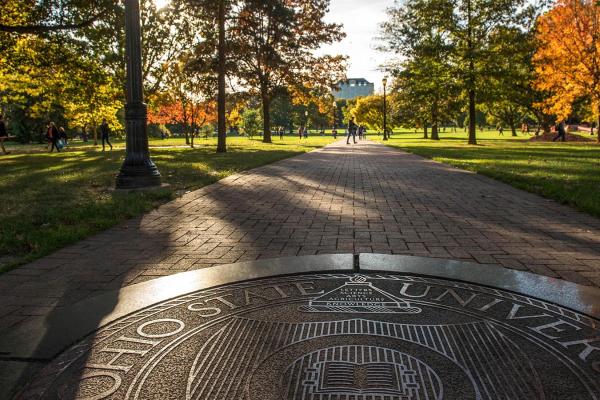Perspectives on Science Communication

The single biggest problem in communication is the illusion that it has taken place.
-George Bernard Shaw
Science communication with those outside your area of expertise can be challenging. The difficulty lies in communicating a complicated idea that is both accurate and engaging. Though difficult, and less emphasized, science communication is an important component of being a researcher. Expertise on effectively communicating our research to a broader audience is available at The Ohio State University and more broadly in Columbus.
To take advantage of these resources I am taking a class (Hort & Crop Science 7806) focused on using multimedia to communicate science to the public. The class is taught through guest-lectures by science communication experts. Recently, Marion Renault, a journalist from The Columbus Dispatch, visited our class. She has written for The Dispatch for several months, and has been highlighting stories that have important implications for us as agricultural/plant scientists, and more broadly as a science community.
The first question I was curious about was, what in general describes scientist as communicators. In her experience, Marion observed that "Scientists have a language of their own - and for the most part, that's a good thing. Scientific jargon is precise, economical and universal. All the specialized terms you master over the years and years of schooling and training allow you to communicate effectively within your field." However, she did have cautionary advice for scientists: "jargon can be exclusive, vague or even pretentious." More so she advised scientists, "Question the necessity of every phrase ("due to the fact that" or "in relation to," for example). Avoid acronyms. Opt for short words. Speak in familiar, concrete terms. The end goal is to be understood, not to confuse."
Looking to examples of really effective science communicator is one way I try to sharpen my communication skills, both for writing manuscripts and relating my work to the public. My favorite examples of 'popular' science communication for a general audience include Radio Lab, Neil Degrasse Tyson's Star Talk, and the weekly Ask Me Anything reddit threads for PLOS One Science authors. More locally, Marion suggested looking at Paul Sutter of COSI Science Museum, Lonnie Thompson of the Byrd Polar Center and Dispatch columnists like Jim McCormac and Steve Rissing. Additionally, your college's news release departments can teach you a thing or two about reaching out expertise to a broader audience.
With an idea of what to aim for and what to avoid, I was curious about what methods we could use to improve our writing. Marion had several tips. The first important thing she said to keep in mind was "Readers can and will check out anytime." When I considered this, I found it to be very true of myself; if a science article is poorly written or difficult to understand, I will often seek out another article altogether. She also suggested eliminating the passive voice, avoiding subtle redundancies, and shortening sentences. In general Marion advises we "make reading as effortless as possible."
Finally, I was curious about how you could get a science story into a publication such as the Columbus Dispatch. Marion had several steps to consider: (1) Make sure the publication is appropriate (Do they have a science section?). (2) Email a reporter or a general news inbox. (3) Briefly describe your story (1-2 lines), and leave contact information. (4) Indicate why your story is newsworthy. (5) provide times to discuss the story. (6) Follow up the initial email.
If you have an awesome science story that will end up in a publication for a broader audience Marion suggests that you need to make an emotional connection. "People do not engage with what they cannot relate to," she said. In essence we need to boil down our research to the results and implications of how it could affect the reader's. Find a real life example of that exemplifies your science story.
Finally if anyone thinks they have a good science story, there is public interest in projects being completed by the Center for Applied Plant Science. In Renault's words "Anything related to agal blooms, climate change, food production and research funding is pretty buzzworthy right now." Most importantly, if you think your story is something that can and should be communicated, you must make yourself accessible and present and relatable research.
Listening to Marion's lecture was very enlightening. I took away several conclusions: It is our responsibility to transfer remarkable research to a broader audience. The results of research are interesting to the public if presented correctly. Finally, there is a new resource I'll consider for editing things I write. We should look to an imbibe examples of effective science journalism- or to the journalists themselves.
If interested in having a story in the Columbus Dispatch, email Marion Renaults.
Written by TPS Fellow, Bill Rolling
rolling.6@osu.edu
Twitter: @BRRolling
